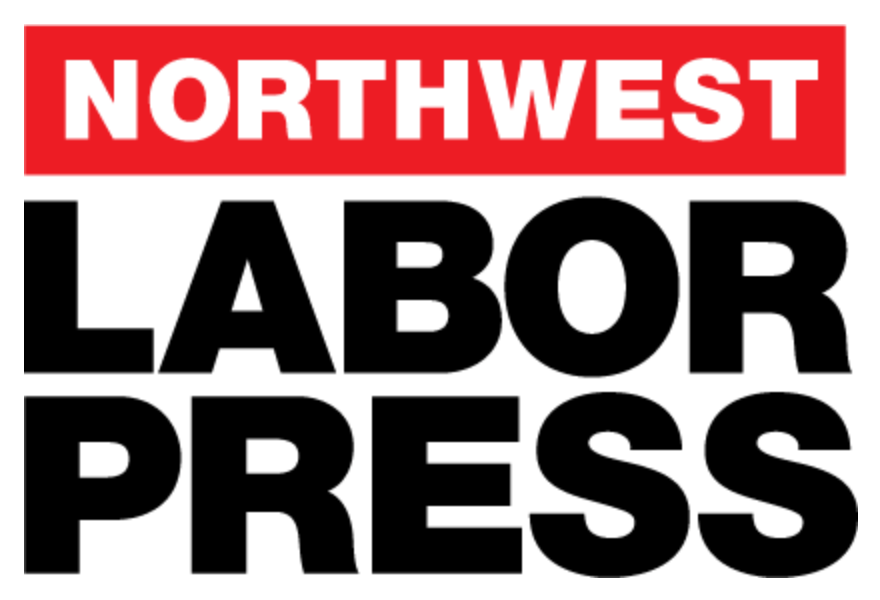By DON McINTOSH, Associate Editor
It took three legislative sessions for the Oregon AFL-CIO to win passage of a state law giving state and local government workers the right to unionize by “card check.” Results since then suggest it’s been beneficial but not game-changing. Just 2,487 workers have unionized through card check so far, and three quarters of those were in a single unit — the 1,912 University of Oregon faculty who joined American Federation of Teachers (AFT) in March 2012. Take that unit out, and that leaves 575 workers (at 31 workplaces) who have unionized through card check in the five years since the law took effect.
The Employee Free Choice Act debate
Card check was the best-known feature of the now-mothballed Employee Free Choice Act, a private-sector labor law reform bill that came within a few votes of overcoming a U.S. Senate filibuster in 2009. Business groups campaigned furiously against card check, pleading that it deprived workers of the benefits of a “secret ballot” union election. Under the card check method of unionizing, also known as “majority sign-up,” an employer recognizes a union once a majority of workers sign authorization cards declaring that they want one. Current U.S. law says private sector employers may recognize a union via card check, but they don’t have to. In other words, it’s the employer’s choice. Most employers prefer the election method, because it gives them on average six weeks to hire union avoidance consultants and mount an anti-union campaign in the workplace, where they have every advantage of controlled access to employees. Unions tend to favor the card check method because it avoids that lopsided electoral playing field.
The dynamics may be different in public sector union elections, because employers may have less incentive to oppose unionization. Still, Oregon’s HB 2891 was heralded by the Oregon AFL-CIO as the year’s top legislative achievement when it passed in 2007. It was meant to do for local public sector workers what the Employee Free Choice Act tried to do for private sector workers — make it easier to unionize.
Union organizers say there’s no denying that card check is an easier method of unionizing, but they point to several factors preventing a flood of new union members. Most of Oregon’s large public sector workplaces are unionized already: Nearly every K-12 teacher in the state is already represented by the Oregon Education Association, and among state employees, only a few thousand union-eligible workers remain nonunion, compared to at least 43,000 who are union-represented. Also, some groups of non-union workers are similar enough to workers in existing unionized units that they join through a different process — unit clarification — which the state Employment Relations Board has ruled they must do through an election.
Card check in practice
Labor union organizers also say Oregon’s card check law has advantages and disadvantages. Oregon AFL-CIO organizing specialist Chris Hewitt says the traditional election has one advantage: It requires that pro-union workers get active, forming a committee and campaigning for weeks or months. With card check, some workers may feel they’ve done all they need to do once they sign the card. Oregon’s card check law also creates a compressed time frame: Once the first card is signed, organizers have 90 days to sign up a majority. The election route allows a union campaign to grow at a more flexible pace.
On the other hand, says AFT president David Rives, with the card check method, a union campaign is more likely to be conducted through one-on-one personal visits. And with card check, the union demonstrates support from an outright majority of the workplace, not just a majority of those voting.
Possible, or just easier?
Does card check make a difference, or does it just make it easier? Richard Schwarz, AFT-Oregon’s recently retired executive director, says he thinks the UO faculty group would have unionized anyway, without card check.
On the other hand, card check might make a difference in cases where an employer wages an anti-union campaign. State employees already had a version of card check prior to the law’s passage, under an executive order of Gov. Ted Kulongoski. Service Employees International Union (SEIU) Local 503 campaigned at the Oregon Lottery under those rules in 2006, and at one point, 156 of 303 eligible workers had signed union cards. But before they were counted, at least seven workers changed their minds and asked for their cards back. Then 133 workers signed an informal petition calling for a union election; an election was held, and the union lost 127 to 165.
Local 503 Executive Director Heather Conroy says the Oregon Lottery would have become union if the card check law had been in effect.
Kulongoski’s executive order didn’t bind the state court system. In a 2004 campaign by Local 503 among 1,348 court employees, the vote was 468 to 547; the union also lost an earlier attempt by 17 votes in 1995. If state court employees had had card check, it’s possible they would have gone union. But they haven’t in the five years since the law gave them that right.
Five other states besides Oregon have public sector card check laws: Illinois, New Hampshire, New York, Massachusetts, and New Jersey.


